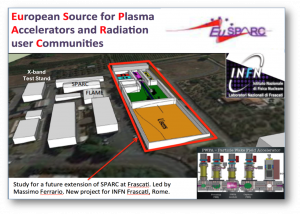The Linear Collider (LC) activities world-wide are entering a defining two years. The overall picture is quite clear in the short term. The European Strategy Update process has defined its organisation and timescale in more detail, expecting input documents to be submitted by the end of 2018. On the ILC side we are expecting clarifying statements from Japan concerning their intention to host the ILC during the coming months.
In the LCWS workshop in Strasbourg in October 2017 the focus was on these two organisational processes. For the ILC there is a clear increase in political activity linked to the decision of reducing the initial scope to a 250-GeV collider. The decrease in cost has put the project into a budget envelope which is familiar to our field and the 250 GeV project is technically and scientifically well documented.
During the recent CLIC workshop at CERN – see the feature article in this issue – it was clearly demonstrated that the technology developments have reached new levels of maturity. The number of projects and groups taking X-band technology into use is increasing rapidly. A European Commission design study (CompactLight) has started up for designing in detail a compact FEL based on this technology, and in Frascati there are concrete plans for using the technology for a ~ 1 GeV linac within a few years. In the framework of the CERN Physics Beyond Colliders initiative the physics and R&D potentials of a ~3 GeV X-band linac injecting electrons into the SPS, accelerating and extraction them to an experimental area, is explored. It seems realistic to assume that by 2025 not only is the CLIC technology fully available but also larger system implementations are underway, and the industrial basis is in place a 380-GeV accelerator.
The LC physics goals of exploring the Standard Model in detail and use these measurements as a portal to new physics beyond remains very solid. Furthermore, the LC projects have overall budget and resource needs that are realistically within reach. In this respect we are in a good position for the longer-term future.
Nevertheless, beyond 2019 the LC planning is at this point difficult. From the European side we are carefully planning for a scenario with CLIC going on to next phase 2020-25 connecting to the coinciding X-band developments/projects in other labs, as well as a slightly different scenario where a smaller X-band machine is developed at CERN for physics. Such a small machine will address many of the key project development goals needed for a 380 GeV CLIC. At the same time we are also preparing plans for a strong European participation in ILC in the scenario that positive statements about hosting it in Japan are made. The input papers to the European Strategy papers will keep us very busy this year; outlining these scenarios such that informed optimal choices can be made.



Recent Comments